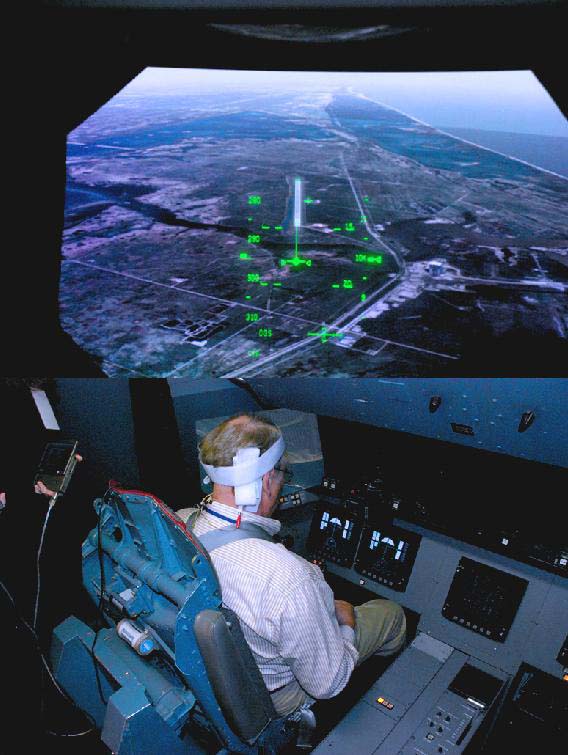 Our analysis (conducted with HAL) of landing performance from the first 100 shuttle missions demonstrated that 20% of landings were ‘hot’; i.e., above the acceptable range of touchdown speeds. Exposure to microgravity has an adverse effect on the ability of astronauts to operate a vehicle. We have been awarded grants from NASA (NNJ04HF51G and NNX09AL14G) and and the NSBRI (SA01603) to study sensorimotor function during shuttle landings and to develop a ground-based analog (using Galvanic vestibular stimulation) of the neurological effects of spaceflight for use in future astronaut training.
Our analysis (conducted with HAL) of landing performance from the first 100 shuttle missions demonstrated that 20% of landings were ‘hot’; i.e., above the acceptable range of touchdown speeds. Exposure to microgravity has an adverse effect on the ability of astronauts to operate a vehicle. We have been awarded grants from NASA (NNJ04HF51G and NNX09AL14G) and and the NSBRI (SA01603) to study sensorimotor function during shuttle landings and to develop a ground-based analog (using Galvanic vestibular stimulation) of the neurological effects of spaceflight for use in future astronaut training.
We conducted a series of experiments in the Vertical Motion Simulator (VMS), the largest full-motion simulator in the world, used for training of astronaut pilots at NASA Ames Research Center. Twelve subjects (comprised of veteran astronauts, NASA test pilots, and former USAF and Navy pilots) each flew 16 VMS shuttle landing simulations both with (8) and without (8) GVS. Our results demonstrated a clear effect of GVS on pilot performance; the number of ‘hot’ landings doubled and unsuccessful (crash) landings more than tripled.
Contact person for this study: Dr Hamish MacDougall
